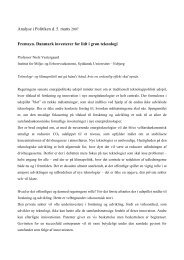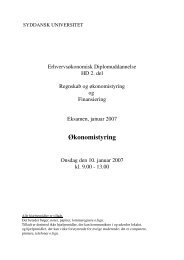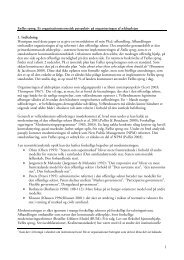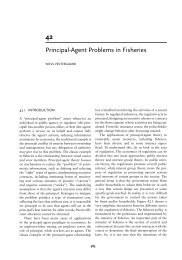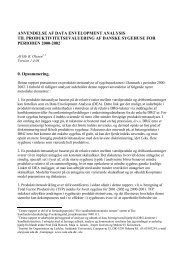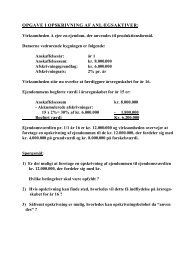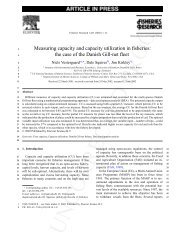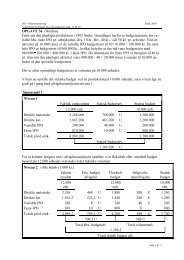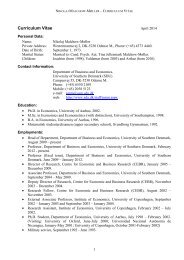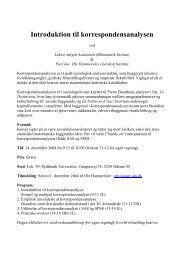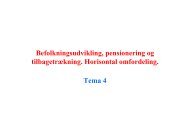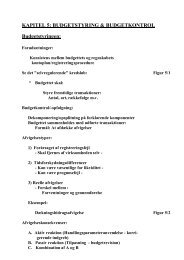Development of Parties and Party Systems in ... - lah@sam.sdu.dk
Development of Parties and Party Systems in ... - lah@sam.sdu.dk
Development of Parties and Party Systems in ... - lah@sam.sdu.dk
- No tags were found...
Create successful ePaper yourself
Turn your PDF publications into a flip-book with our unique Google optimized e-Paper software.
also been fairly high on bigger private enterprises, while the <strong>in</strong>fluence has been low on the newm<strong>in</strong>or private firms, where the attitudes to market economy have been more positive. Furthermore,resistance from employers side aga<strong>in</strong>st the establishment <strong>of</strong> trade unions has been the strongest onnew small enterprises. In order to get more support <strong>and</strong> new members the trade union Solidarityhad to secure for itself a better representation on new private enterprises; if that did not happen, thenumber <strong>of</strong> trade union members might fall to under one million, i.e. less than half <strong>of</strong> themembership <strong>of</strong> the “post-communist” OPZZ. The regional structures also had to be adapted to thenew adm<strong>in</strong>istrative division consist<strong>in</strong>g <strong>of</strong> 16 regions (“voivods”), however, for historical reasonsstrong resistance aga<strong>in</strong>st such regionalisation existed <strong>in</strong> almost all regions <strong>of</strong> the country - <strong>in</strong>clud<strong>in</strong>gthe biggest one, Mazowsze.Thus we can say that the norms from 1980-81 did not fit with the construction <strong>of</strong> a new functionaldemocracy <strong>and</strong> market economy, neither <strong>in</strong>side the Solidarity movement nor <strong>in</strong> Pol<strong>and</strong> as a whole.Furthermore, we can conclude that <strong>in</strong> the first stage the goals for the future were broadly formulatedas abstract symbols <strong>and</strong> discourses <strong>in</strong>clud<strong>in</strong>g dem<strong>and</strong>s for self-organisation <strong>and</strong> "”spolecznienie"”<strong>of</strong> the state, i.e. transition to a morally based economy. Lech Walesa’s dem<strong>and</strong>s <strong>of</strong>”przyspieszenie”, i.e. “speed<strong>in</strong>g up” the fight aga<strong>in</strong>st the old system, were pushed forward, <strong>and</strong> later“democratic socialist ideology” was <strong>in</strong>cluded with dem<strong>and</strong>s for a participatory democracy <strong>and</strong> amoral type political economy.2.5. The first big crisis <strong>and</strong> the political come-back <strong>in</strong> 1997The 1993 election was a shock for the Solidarity movement. In the new parliament elected <strong>in</strong> 1993Solidarity did not parliamentary representation at all. Accord<strong>in</strong>g to Mariusz Muskat (Bäcker etc,2001:167) the fundamental error was the premature assumption <strong>of</strong> power back <strong>in</strong> 1989. The Unionfailed to recognize the importance <strong>of</strong> formulat<strong>in</strong>g strategies for cop<strong>in</strong>g with the most importantproblems <strong>in</strong> society. Moreover, the l<strong>in</strong>ks with the nation were weaken<strong>in</strong>g <strong>and</strong> the old Solidarityethos wan<strong>in</strong>g.In 1993 Solidarity went on the barricades <strong>and</strong> put forward a vote <strong>of</strong> non-confidence to HannaSuchocka’s Solidarity-led government, later, after the defeat at the 1993 election, Solidarity rejectedthe ”godless” “post-communist” proposal for a new constitution. Act<strong>in</strong>g outside parliamentSolidarity tried to rega<strong>in</strong> the lost <strong>in</strong>fluence by organis<strong>in</strong>g strikes <strong>and</strong> demonstrations aga<strong>in</strong>st the“post-communist” government. Among the more spectacular <strong>in</strong>itiatives we f<strong>in</strong>d the collection <strong>of</strong>500,000 subscriptions support<strong>in</strong>g Solidarity’s proposal for a new Solidarity <strong>in</strong>spired constitution 45 .In the commission which prepared the proposal for a new constitution also representatives from thecommon secretariat <strong>of</strong> the centre-right groups were represented. The 500,000 subscriptions gaveSolidarity the right to be represented <strong>in</strong> the constitutional commission set up by the parliament, butthe aim to br<strong>in</strong>g its own proposal to a national referendum at the same time as the proposal from thegovernment failed because <strong>of</strong> resistance aga<strong>in</strong>st the constitutional proposal from the rul<strong>in</strong>g “postcommunist”parties SLD <strong>and</strong> PSL.At that time the prospects for creat<strong>in</strong>g a common front aga<strong>in</strong>st the ”post-communists” were notbright. To a great extent the disagreements on the Right concerned the role <strong>of</strong> trade unions on state<strong>and</strong> regional level, e.g. policy related questions such as privatisation <strong>and</strong> economic reforms. Thetrade union Solidarity’s strong position were mostly due to the organisational vacuum on thepolitical Right. No other political groups could act as a “unifier” (Knuzewski, 1998:157). After the45 ”Obywatelski Project Konstitucji Rzeczpospolitei”.53



